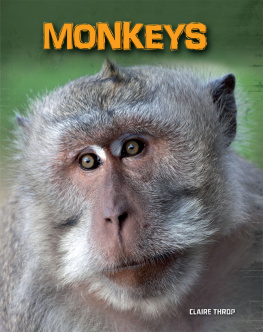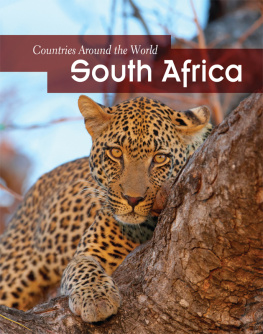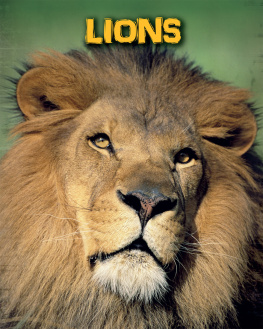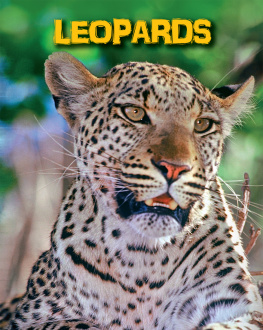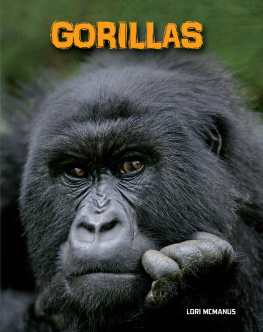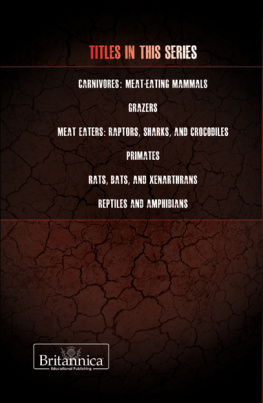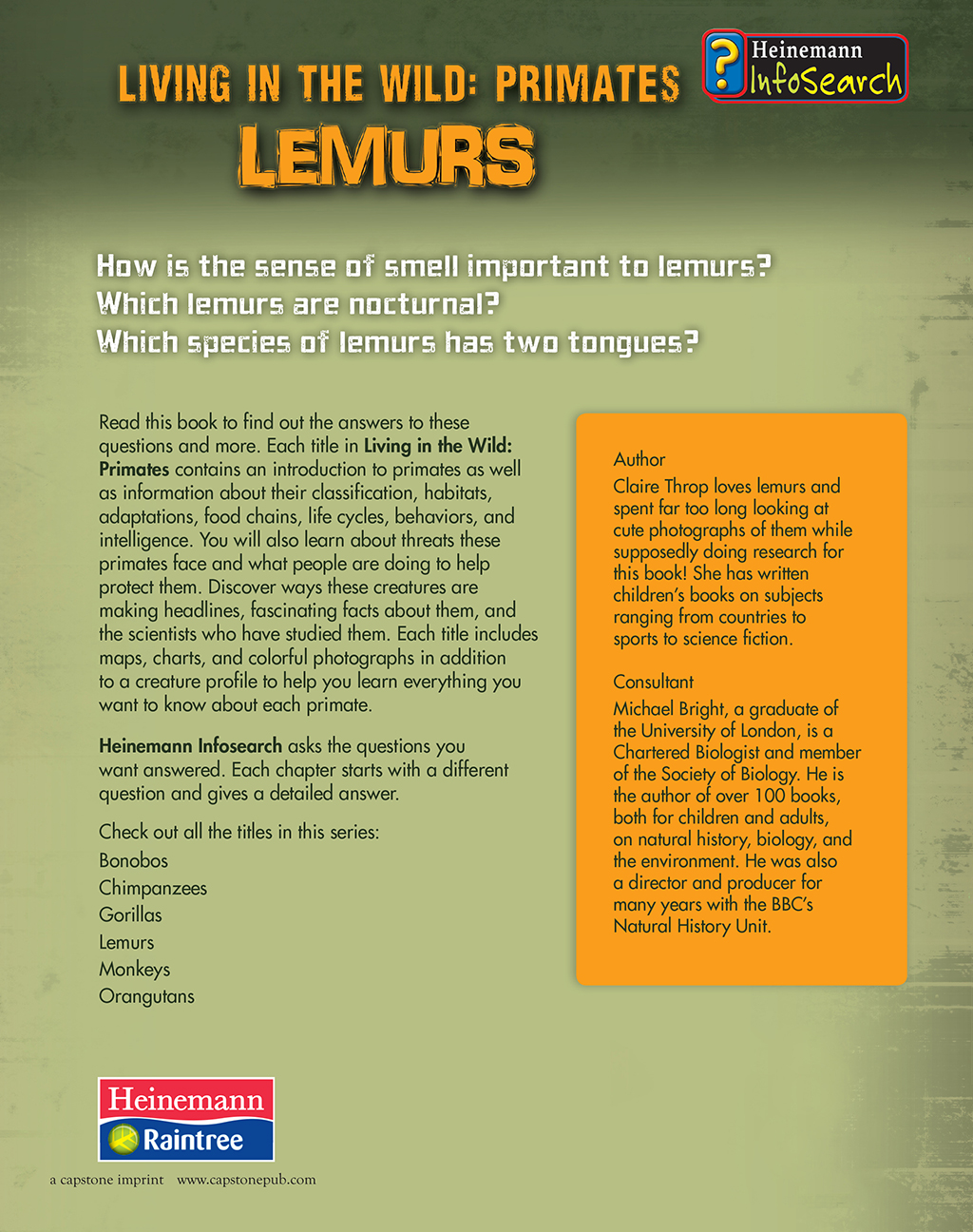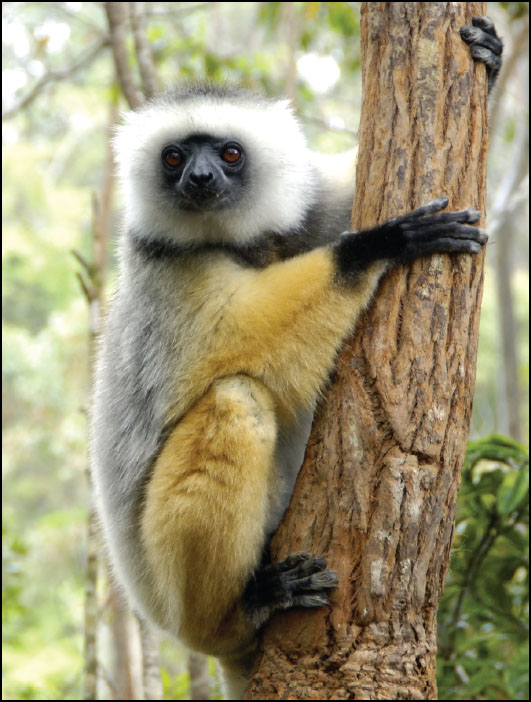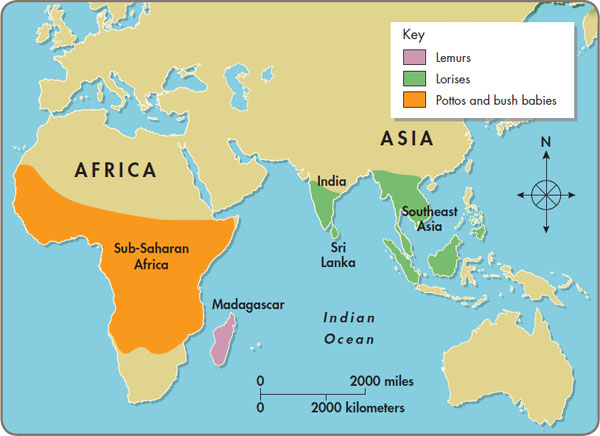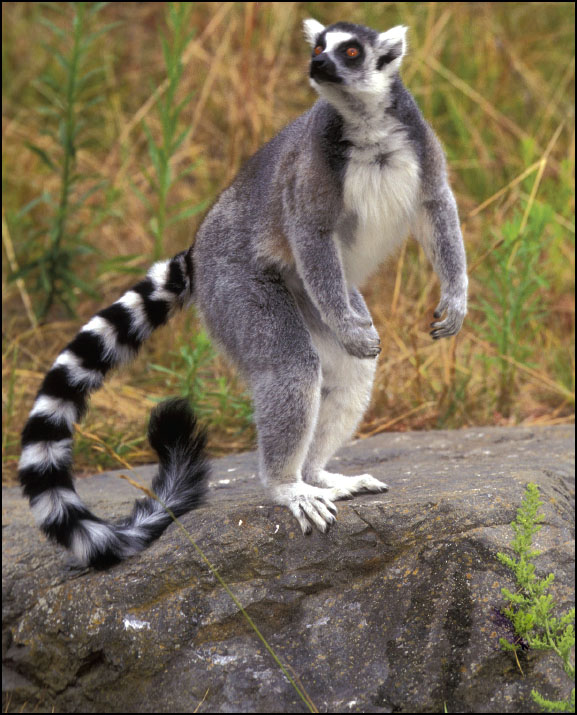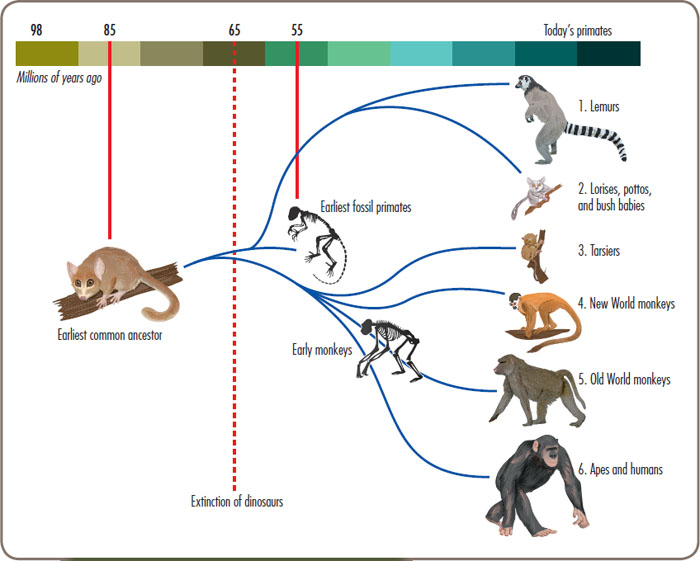What was that? Something moved in the trees! It was a woolly lemur leaping from treeto tree. Lemurs use their powerful legs to push themselves a distance of up to 33feet (10 meters).
There are thought to be more than 350 species of primates. These include lemurs,apes, monkeysand humans! Our closest relatives are apes and monkeys. We are veryalike in many ways. Primates are mammals . This means they have hair or fur on theirbodies and produce milk for their babies to drink.
This map shows where in the world non-human primates live.
Primates can be very different, but they also have many things in common. Primatesare mainly arboreal, which means they can live in trees. They are also intelligent.They can think about problems and try to solve them. They can learn new skills andpass them on to their young. The other thing they share is a desire to be social,which means they like to live with others. Many species of primate live in largegroups called troops.
Lemur species vary a lot. Some are active during the day, while others are activeat night. Some like to live on their own, while other species prefer to live in groups.Nearly all are threatened or endangered in the wild.
Most lemurs move by leaping from tree to tree. They have strong back legs and longtails to help them balance.
What Are Lemurs?
Lemurs are prosimians , which means before apes. They are less closely related tohumans than monkeys and apes are. They are closer to early primates of millions ofyears ago.
Where do lemurs live?
Lemurs can be found in the wild only in Madagascar, off the southeastern coast ofAfrica, and the nearby Comoros Islands. Lemurs have lived there for 50 million years.It is thought that they may have floated across to the island on vegetation (plantlife).
Lemurs live in Madagascar. Close relatives of lemurs include pottos, bush babies,and lorises.
Most prosimians in Africa were eventually replaced by monkeys. Monkeys did not makeit across to Madagascar, however. This lack of competition allowed lemurs to flourishthere. Less than 2,000 years ago, humans arrived in Madagascar. Since then, lemurshave gradually been forced out of their natural habitats , and a number of species ,including the giant sloth lemur, have died out.
Lemur features
Lemurs have soft fur and long, furry tails. Prosimians have a toilet claw on theirsecond toe and dental or tooth combs, all of which are used for grooming (see page). Lemurs have eyes at the front of their heads, which gives them a wide view andallows them to judge distances well. A light-reflecting layer in the eye helps themto see at night.
Ring-tailed lemurs can live for up to 18 years in the wild.
Smell
Lemurs have pointed snouts, and their sense of smell is much stronger than theirsense of sight. This is the opposite of monkeys and other primates. The sense ofsmell is important for finding food. Lemurs also have powerful scent glands thatthey use to mark territory . Females use scent to show they are ready to mate, andmales use it to attract females.
How Are Lemurs Classified?
Classifying things is the way that humans try to make sense of the living world.Grouping living things together by the characteristics that they share allows usto identify them and understand why they live where they do and behave as they do.
This diagram shows how primates have evolved into different groups.
Classification groups
In classification, animals are split into various groups. The standard groups arekingdom, phylum, class, order, family, genus, and species . Sometimes, further classificationinvolves adding more groups, such as a suborder or infraorder. Each of the standardgroups contains fewer and fewer members. For example, there are far more animalsto be found in the class Mammalia ( mammals ) than in the family Lemuridae (lemurs).Animals are given an internationally recognized two-part Latin name. This helps toavoid confusion if animals are known by different common names in different countries.For example, the ring-tailed lemur has the Latin name Lemur catta .
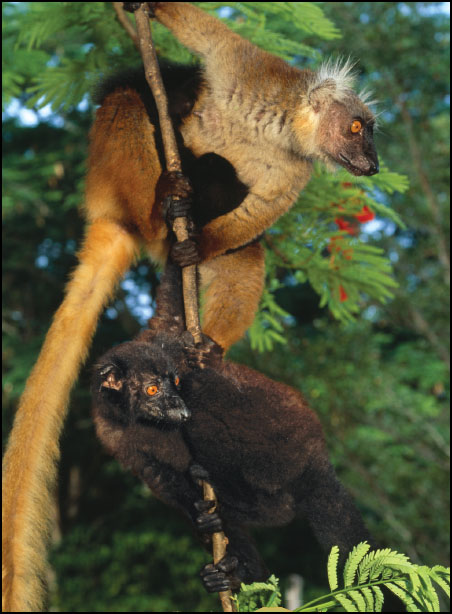
BLACK LEMURSOR ARE THEY?
Male and female black lemurs were originally thought to be different species becausethey look so different. Males are black, but females are reddish-brown and have light-coloredbellies and ear tufts.
Strepsirrhini
Strepsirrhini ( prosimians ) is a suborder of primates. The suborder includes lemurs,bush babies, pottos, and lorises. There are five families of lemurs. The true lemursinclude ring-tailed lemurs, ruffed lemurs, and brown lemurs. Sportive lemurs includethe Northern sportive lemur and Milne-Edwards sportive lemur. Woolly lemurs, sifakas,and indris make up another family. Dwarf and mouse lemurs are grouped together withfork-crowned lemurs, and the aye-aye is in a family of its own.
Controversy
It is thought that there are about 100 known living species of lemur, which is anincrease on the 50 thought to be in existence in 1994. This increase is mainly becauseof the conservation focus on Madagascar in recent years, during which many more lemurspecies have been discovered. Scientists do not all agree on this issue, however.Some experts think that new species are announced too quickly, without investigatingenough to check that they are new species. This is perhaps done in order to increasethe pressure on the government to put in place more protection for the lemurs habitats .
Tarsiers
Tarsiers are another type of primate that was at one stage included with prosimians.However, they are now placed in a different suborder, linked with monkeys and apes.They look similar to bush babies, but their sight is much better than that of otherprosimians, and they make less use of smell.
CHARLIE WELCH AND ANDREA KATZ
Scientists Charlie Welch and Andrea Katz were involved in the Madagascar Fauna Group.This was set up in 1988 after the government of Madagascar asked for help with conservation.It is an international group of zoos and other institutions that work together tohelp save Madagascars animals and habitats. Welch and Katz helped to set up a captivebreeding program that allowed lemurs to be reintroduced into the wild for the firsttime in 1997. Welch and Katz worked in Madagascar for 17 years.


